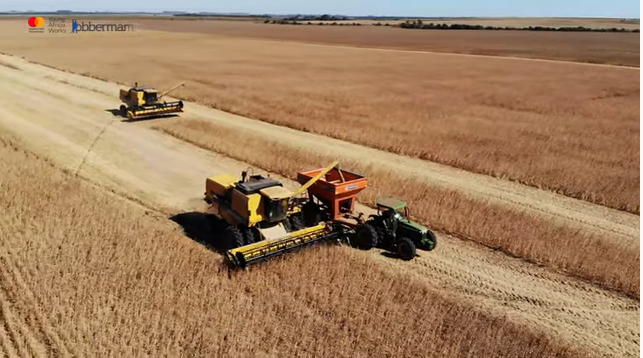


Nigeria’s agriculture sector is perhaps the most prosperous economic sector in the country. The sector is currently the largest employer of labour, providing a means of livelihood to over 23 million Nigerians. At the same time, it is the largest single contributor to the country’s GDP, contributing over $103 million to Nigeria’s GDP in 2020 alone despite an estimated loss of about $1.6 billion during the pandemic. Be that as it may, the country is yet to tap into the real prosperity potential of the sector.
Practitioners have continued to emphasise that the sector is largely unstructured. The sector appears to be trapped in traditional approaches and is dominated by smallholders with limited knowledge, skills and capacity to meet the food demand of a growing population. Value chains remain largely unexplored, while the traditional open grazing and food production system continues to expose the sector to the devastating effects of climate change and insecurity. Similarly, poor working conditions, wage disparity, limited skills, education and decision making capacity continues to undermine women’s productivity and livelihood.
Although agriculture is the largest employer of labour, about 72% of those engaged in the sector are smallholder farmers living below the poverty line ($2 a day). This is largely due to structural conditions such as lack of access to improved inputs (seedlings, fertilisers etc.), extension services (irrigation, vaccination etc) and infrastructure (roads, storage facilities and electricity etc.). Smallholder farmers are also plagued by inadequate training, limited access to finance, inadequate market information, and low adoption of mechanization, all of which are crucial for agricultural productivity and value addition.
In recent times, more and more young people have taken the driver’s seat – leading innovation, and the technological transformation that is disrupting agriculture and its value chains. Youth driven agtech agencies are attracting social capital to develop strong, globally competitive structures that can harness emerging opportunities within the sector. Furthermore, COVID-19 is forcing us to rethink how we process, market and distribute food. The pandemic has accelerated digitization in the sector, but the extent to which we are able to leverage youth agency and digital innovations in the agriculture sector remains a begging question as policy, politics and the dynamics of who gets what, when and how remains a stedfast roadblock towards a prosperous agriculture sector.
Although agriculture is recognized as an essential policy tool for achieving economic diversification and improved employment outcomes, the sector currently exists in a time warp. The sector mirrors the image of contradicting realities as it simultaneously struggles to bear the burden of an analog past, a compounding of opportunities and challenges in the present as it contemplates the future.

Contemplating the future of the sector will require that policy creates an environment where innovation and technology can be effectively leveraged as we herald the Fourth Agricultural Revolution. At the same time, effectively harnessing and deploying the agency of the growing youth population can potentially accelerate the prosperity potential of the sector.
Based on Jobberman analysis, there is a real potential in this regard. While the sector currently employs over 23 million people, the estimates from Jobberman research suggests that the sector can create an additional 4.5 million jobs in the next five years across five sub-sectors including Crops, Livestock, Fishery, Forestry and Horticulture.

One might ask, where will these jobs come from? They will be from the highly specialised roles such as agro-processing and farm operations; generalist roles such as agricultural extension services, project management and accounting; as well as specialized tech roles such as equipment and machine operations, software management, and social media management. However, if young people will benefit from this opportunity, they will need to develop the necessary skills, abilities and attitudes required to transition into jobs within the sector.
Additional insights from Jobberman research indicates that there are significant skills gaps (both technical and Soft skills) and potential demand gaps across five skill clusters. In relation to technical skills, the research found skill gaps in areas such as soil management, farm produce packaging, breeding techniques, animal nutrition, wildlife administration, ornamental horticulture, farm equipment operations, equipment techniques, data science and machine learning, and software development.


Furthermore, the research also identified demand gaps in roles such as soil management, agro-processing, crop management, animal nutrition, fish farm management, livestock marketing, botany, landscape design and management, floristry, and farm equipment operations.

While the research indicates that employers within the sector are prioritising tech related skills, it is interesting to also learn that employers’ perception about soft skills is also shifting. From a soft skills survey that assessed seven competence areas (including professionalism, work preparedness, personal effectiveness, communication skills, innovativeness, emotional intelligence and problem solving), an average score of 46% was recorded from 116, 627 unique jobseekers. This echoes the concerns of employers engaged in the study as they indicate that low proficiency in soft skills could significantly affect young people’s employment outcomes in the agriculture sector.
Closing this gap will require significant investments in skills development (core agricultural, technical, digital and soft skills) especially for women and young people in marginalized communities to enable them to transition into jobs and contribute meaningfully to the sector. Similarly, improving working conditions for women and enhancing their land ownership rights, to aid decision making will be imperative in maximizing value additions.
Already, there is renewed government interest through policy to promote growth within the sector, but improving agricultural policies to support innovation will be crucial in stimulating growth and sustaining the demand for agrotech innovations in the country through private-public partnerships. More importantly, tackling insecurity and leveraging technology to manage the effects of climate change on agricultural production are necessary for creating an enabling business environment.





